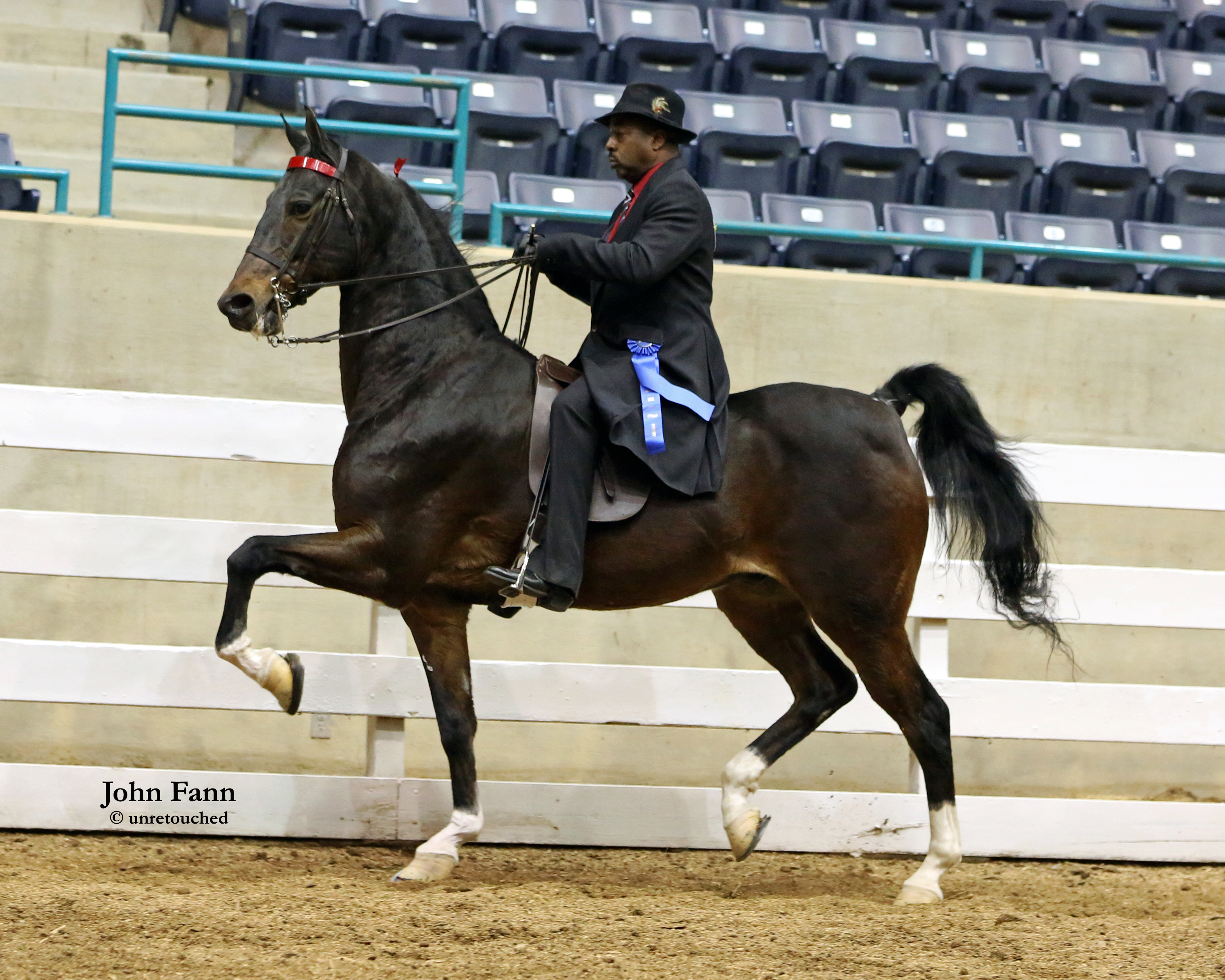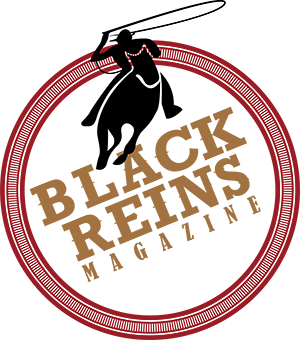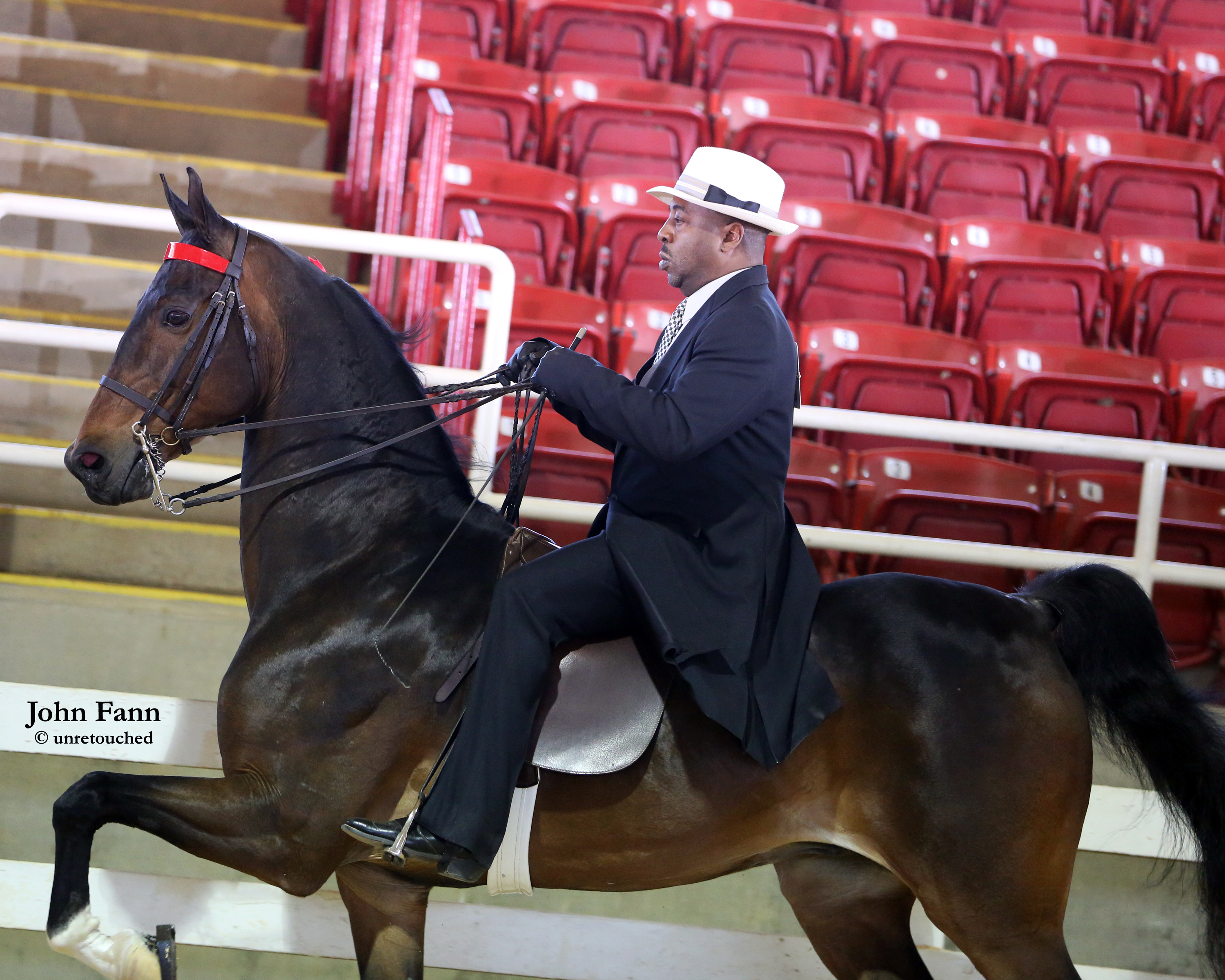Robert Scott & Darren Scott The Scott Legacy with The American Saddlebred
What is a legacy? Is it something that is passed on to you from family, including reputation? Is it anything handed down from an ancestor?
The Scott legacy of spans back to the 1940’s. Many minority men and women hopefuls seeking to rise from the state of being unknown are overshadowed by prejudice, inequality and prestige. They are and were highly skilled professional athletes.
In 2001 Trainer Robert Scott was inducted into the J.D. Massey Classic Hall of Fame. Scott, a member of the J.D. Massey board, was honored to have his son Darren attend the presentation. This Father and son operate Robert Scott Stables in Greenville, S.C. Today his son Darren Scott serves as Vice President in the J.D. Massey Executive Board. Originally known as The Greenville Horse Show, the event started in June 1933. This year marks its 84th anniversary
In the late 1940’s, as a small child, Robert Scott played around the barn of his cousin James Scott a distinguished trainer in westernmost part of South Carolina known as the Upcountry or Upstate. It includes the counties of Greenville, Spartanburg, Anderson, Pickens, Cherokee, Oconee, Union, Laurens, Greenwood and Abbeville. A championship five gaited mare named Easter Parade was trained there. Owned by the Chapman’s of Greenville SC, their stable included a line of champion American Saddlebreds and Tennessee Walking Horses. Robert Scott’s older brother was the groom to Easter Parade. As a four year old, Robert Scott recalls the story that Easter Parade was the foal of an ole plow mare, but when put in long lines, a technique to introduce or start a horse new steps in training by James Scott, she began to engage and rack, which is a four-beat gait with equal intervals between each beat. For two years -1945 and 1946 – the mare was shown solely in harness and went on to win Fine harness championships in Georgia, North Carolina, South Carolina and Lexington, KY. The mare received recognition and was titled as Fine Harness and Fine Harness Championship in 1946 at Lexington, KY. Under saddle this mare continued to win and in 1947 at Lexington, KY showed in the Five Gaited Stake where she became reserve champion and was purchased by another stable. As a five gaited mare she went on the win at Madison Square Garden and World Grand Champion Five Gaited. However, James Scott was not in the irons. The segregated 40’s in the South and world championship horse shows were not places to showcase your skills as a minority. Many like James Scott, were nameless talented individuals left in the elucubrating arena of horse training with little or no recognition for their contributions. Their presence seen only as grooms, stable hands or exercisers at horse shows across the country through sabotage and subterfuge.
James Scott had many horses and ponies in training during the 1940’s and 1950’s. In 1954 Robert Scott began his career with horses at the tender age of 12. Under the guidance of his cousin James Scott and his three brothers, Robert Scott was well on his way to become a horseman surrounded with their experience and expertise. Horsemanship begins with the basics learning to groom, halter, lead and tying. The simplest of tasks performed around horses must be done correctly because it takes time for both horse and handler. But, like any good horseman in training, you start out mucking stalls and grooming until you work your way up to riding.
Robert began breaking ponies to ride and drive at James Scott’s farm and then went to work for Gaymont Farms in South Carolina. There he worked with Golden Comet, Fancy Turnout and Miss Bobby Jane. In the late 50’s early 60’s his career continued at Cleveland Park Stables, a fixture in downtown Greenville, S.C. since the 1940s, producing numerous champion Saddlebreds and Hackney ponies. Robert worked with Sound Barrier, American Dictator and Bourbon Masterpiece. These skilled and talented men and women were engulfed with magnificent horses during their tenures at farms and stables across the country, developing these horses into champions and making them worth hundreds of thousands of dollars. Yet once while at a show in Winston-Salem North Robert saved a horse that was tied-up a laymen’s term for the condition Exertional Rhabdomyolysis. With is this condition there is massive contraction of the muscle along the back and rump of the horses. The muscles contract and do not relax. The horse will thrash around and appear to be nailed to the floor and may run a temperature upwards of 104 degrees. Robert Scott spent countless hours caring for the gelding which recovered and later won many titles at shows in the southeast. For his noble efforts and act of character and saving the owner’s favorite horse he was awarded $5.00 (five) dollars. Then there was the time he shared a shoeing technique for gaited horses with a young white blacksmith who later mastered the process and gained shoeing privileges at major horse shows. He was reveled as a teacher and practitioner of shoeing, but never shared who taught him. If you research long and hard enough you hear all kinds of stories out there involving these minority professional men and women of the horse show industry being neglected or being denied their potential as role models for neighborhoods, cities, states, countries or the world. There were many who could not embrace the idea that they had the influence to change the horse world of today.
Robert stayed at The Park and worked horses for many owners and customers using his horsemanship skills to train and to cure. When Cleveland Park changed hands, he made plans to leave and did so to become a riding instructor in Norther Greenville County. The site was a short distance from Furman University who caught wind of his successful riding program through the Furman students he trained. The university entertained the idea to build a small barn and arena to organize their own riding program for their students. This was during the 1960’s. The riding facility never happened. It was now time for Robert to look differently at the horse training business physically, emotionally and financially. He turned down an opportunity to work in Kentucky, but did work in Florida for about a year, but he returned home back to Greenville SC in the mid 60’s to marry and start a family and get a “normal” 9 to 5 with benefits. He continued to work with horses during his 44 year tenure in the textile mills, in addition to being a husband and father. But once a horseman always a horseman you can’t get away or keep away. When you have the skill, knowledge and expertise, family, friends and past customers will come for profession help. Once it’s in your blood, the love of horses becomes deeply ingrained trait not likely to change. That is why he partnered with a good friend at Double Q stables and began working horses again after hours while still keeping a full-time job. He moved to Whispering Pines Stables in Mauldin SC located south of the center of Greenville county between the city of Greenville, the move was prosperous throughout the 70’s and 90’s when it too was sold Robert settled in his current location at Gaymont Farm where he and son Darren operate Robert Scott Stables in Greenville, SC.
Robert Scott’s actions throughout the years have set precedence for his legacy. He has experienced the ins and outs, ups and downs growing up in times of turmoil and human injustices. Being in the midst of greatness but clouded by prejudice. This is his story, his fate, his destiny, his time. We must capture his stories from the 40’s, 50’s 60’s, 70’s, 80’s, 90’s and today. There is so much more to hear about the path he chose, the sacrifices he made.
What he has done is nothing out the ordinary for him. Robert knew there was a responsibility in the choices he made. There were many trainers like him with the talent but they fell to alcohol, drugs or economic strife. A man of large statue yet known for his politeness, caring and sharing attitude, he’s also strong-willed and determined. These characteristics have helped him to maintain relationships with students, owners and trainers from his 50 plus years in the horse show business industry. His love for what he does has brought him an audience. His positive impressive aspects have and will always be honored, while many of his actions may have gone unnoticed like so many in the past and present acknowledging them today will give validation. If we want more good in the world we must all work harder to promote it.
What can be done to keep the legacy of minorities in the American Saddlebred industry? Darren Scott suggests that word has to get out. “There has been low interest”, he states. “Awareness is the key.” Then there must be parental participation, they have offered free lessons, free rides but attendance was low. We need to feel the dirt under our feet and in our face. To learn about our soil and its richness.

Robert Scott Stables currently has 4 students with horse show potential. There should be many more. It takes 3 to 6 months of training for a rider to reach amateur level but the most obvious has to do with money. We all know that equestrian sports are expensive. Horses must be bought or leased, then trained and maintained. Because of disparities in income levels, and decades of economic and racial oppression, it has taken much longer for minorities to become wealthy enough to afford participation in expensive sports like riding. Historically it was considered the rich white man’s sport. This is not the case. We have found other distractions TV, phones, social media etc. Darren Scott states we have got to look out for ourselves and one another. Being united make things happens. We have got to reach out to those in the horse industry on a local, state and national level, impress upon them the benefits and significant impact horse show have, they provide family entertainment, can make substantial contributions to a city’s economy and attract riders across the nation and world.


